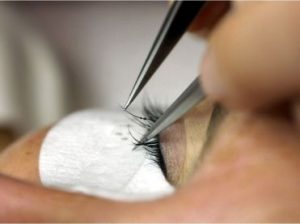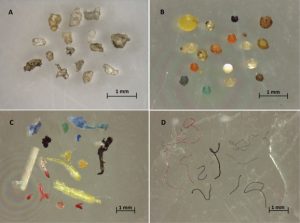When we think of single-use plastics, we usually think of food packaging, not beauty products…
A sad fact of ageing that no one ever seems to discuss is the thinning of eyebrows and eyelashes. You would think that those little hairs would be inconsequential, but they provide essential colouring and definition to the face. Beginning this year, I noticed how I was reaching for my eyeliner pen more and more, not something I normally do, but no amount of eyeliner could hide the fact that my eyelashes are way thinner than they used to be. (If you ask why I don’t use mascara, I have never liked using it, too messy for me.)
After much internal debate (and reading a ton of reviews online), I went to a salon for eyelash extensions. Eyelash extensions involve the application of individual lashes to each of your existing lashes, creating the illusion of lush, full lashes. I went to N15 Beauty Salon, a Japanese salon downtown that advertised “mink” and “sable” lashes. As I wanted as natural look as possible, I thought animal fur was my best bet. When I got there, I discovered that the lashes were actually synthetic, but as it was too late to back out, I went ahead with it. When the technician was done and handed me the mirror, I was enthralled with the effect – my first thought was, “My eyes look like they used to look when I was in my 20s!!!”. My triumphant mood was cut short less than a day later, when the news about microplastic pollution from disposable contact lenses came out. It then hit me that my lash extensions were going to cause the same problem…
As you might guess, lash extensions are, for the most part, synthetic fibers, made of a type of polyester called polybutylene terephthalate, or PBT for short. In essence, these are single use plastics. They are shed as the eyelash to which the extension has been glued is naturally shed off (eyelashes are shed every 7-8 weeks) or else the extension falls off by itself, either due to rubbing or the adhesive wearing off. Most of the shedding occurs when the wearer washes their face or takes a shower, which means most, if not all, of the eyelash extensions go straight down the drain. If they don’t go down the drain, then they end up littering the landscape. Like any kind of plastic, PBT does not biodegrade to any extent within a conceivable amount of time – they are basically going to be around for hundreds, perhaps thousands of years.

Lash extensions and “lash bars” have become hugely popular over the past several years. I suspect their popularity is fuelled by celebrities and social media (think of the Kardashians, with their over-the-top lashes), also the fact that these instantly take years off one’s appearance while allowing one to skip the inconvenience of daily mascara and eyeliner. Every salon offers a “refill” discount, to encourage customers to come back every 2-3 weeks to replace lashes that have been shed.
There are lash extensions made from mink fur and in rare instances, from human hair, but you will have to look hard to find them. In Toronto, at least, every salon I checked only offers synthetic lashes. Some salons, like the one I went to, advertise “mink” lashes, but if you check the packaging, the lashes are labelled “synthetic mink”, i.e. they are still made of PBT. Not a single salon mentions (or probably even thinks) of the environmental cost of these things. Given the fine diameter of the lashes – less than a millimetre thick – it is unlikely they would be caught by sewer treatment plants, as these are very similar to the microfibres that come from synthetic textiles that are also showing up in aquatic ecosystems. Microplastic polluti on in oceans and other bodies of water is deeply concerning: these plastics are so tiny, they are consumed by aquatic wildlife (think fish and filter feeders such as shellfish) and can then work their way up the food chain,
on in oceans and other bodies of water is deeply concerning: these plastics are so tiny, they are consumed by aquatic wildlife (think fish and filter feeders such as shellfish) and can then work their way up the food chain,
which includes humans. Worse, these plastics absorb and concentrate chemicals in the water, thus affecting the health of whatever organism consumes the plastic. (Read more about this issue here.)
Eyelash extensions are just the latest example of plastic pollution stemming from consumption of beauty products. They are symptomatic of how our society consumes products without thinking of the resources used to create the product and what happens when we have finished with the product. When we go to a beauty counter in a department store, or we visit Sephora, is there any thought given to the little plastic containers and packets that are used for giving away samples? What about all those little plastic spatulas, spoolies, and sponge applicators that people use to test makeup? Every one of those things is a single-use plastic that is used for a moment and then thrown away. That’s not even taking into account all the plastic used to package the products themselves. None of it is recyclable and will sit in a landfill for the next several thousand years. In order to tackle this problem, we need to change our way of thinking about how we consume products. In order to do that, we need to be as informed as possible so we can make smart choices about the products we choose to buy and consume.